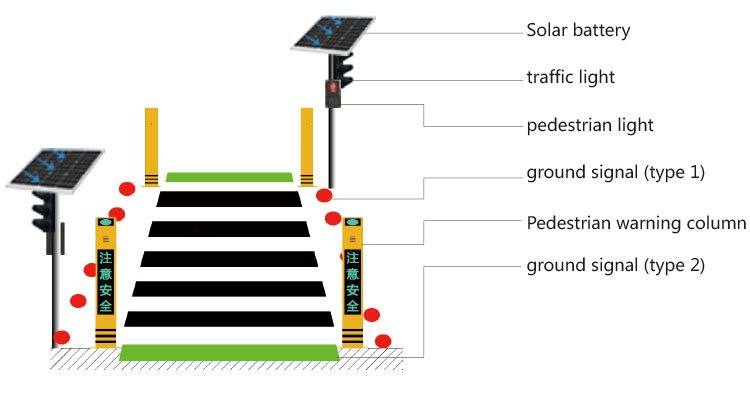Revolutionizing Pedestrian Crossings:The Solar-Powered Wireless Intelligent Crossing System
Pedestrian safety is a growing concern in urban areas, with increasing numbers of pedestrians being involved in accidents. According to the World Health Organization, over 270,000 pedestrians lose their lives each year due to road accidents. In response to this challenge, governments and urban planners have focused on improving infrastructure, including pedestrian crossings.
Traditional pedestrian crossings include crosswalks and traffic lights. However, these methods have their limitations. Crosswalks are often prone to wear and tear, making them difficult to see and increasing the risk of accidents. On the other hand, traffic lights require the installation of a complex control system, making them costly and time-consuming to set up.
To address these issues, we have developed the Solar-Powered Wireless Intelligent Crossing System. This system provides a reliable, cost-effective, and efficient way to facilitate pedestrian safety.

The Working Principle
The Solar-Powered Wireless Intelligent Crossing System is powered by solar energy and requires no external power source. The various components of the system communicate wirelessly, making it easy to install and maintain. The system provides three types of warning signals: text, light, and voice.
During the red light period, the pedestrian-side ground signal light displays a red light, the pedestrian warning column displays a red text message, and a voice warns pedestrians not to cross. At the same time, the ground signal light on the roadway displays a green light, indicating that the vehicles can pass.
If a pedestrian tries to cross during the red light period, the pedestrian warning column will detect the pedestrian and issue an audio warning.
During the green light period, the pedestrian-side ground signal light displays a green light, the pedestrian warning column displays a green text message, and a voice warns pedestrians to cross. At the same time, the ground signal light on the roadway displays a red light, indicating that the vehicles cannot pass.
System Components:
The Solar-Powered Wireless Intelligent Crossing System comprises several components, including:

1) Solar panels
These panels generate electricity from sunlight and charge the battery.
2) Battery
The battery stores the electricity generated by the solar panels.
3) LED ground signal light
These lights indicate whether it is safe for pedestrians to cross.
4) Pedestrian warning column
This column displays text messages and emits voice signals to pedestrians
5) Controller
The controller manages the traffic signals and communication between the various components.
6) Traffic lights
These lights control the flow of traffic
System Features:
The Solar-Powered Wireless Intelligent Crossing System offers several unique features, including:
- Wireless Communication – The wireless communication between the various components ensures a stable and reliable system.
- Solar-Powered – The system is powered by solar energy and requires no external power source, making it easy to install and maintain.
- Flexible Signal Control – The controller can adjust the signal timing based on traffic flow.
- Text Reminders – The system offers text reminders, making it easy to use at night when the sound is turned off.
- Voice Warnings – The system offers voice warnings in clear, concise language, ensuring that pedestrians understand the warning.
- Accident Detection – The pedestrian warning column detects pedestrians who are crossing during the red light period and issues an audio warning.
In conclusion, our solar-powered wireless pedestrian crossing system offers a solution to the limitations of traditional pedestrian crossing facilities. It is a stable and reliable system that is easy to install and provides clear text, voice, and light warnings for pedestrian safety.
If you want to know more about our system, please visit our website for more details.
